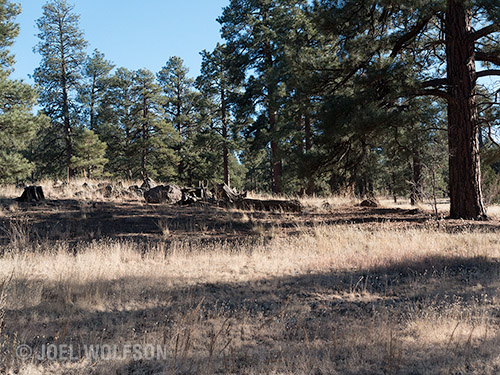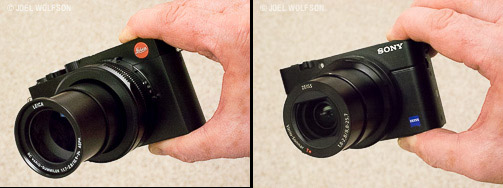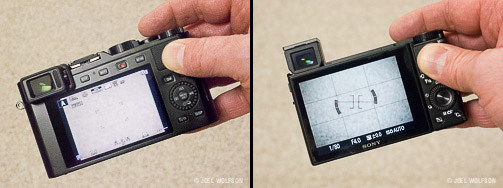The Ideal Compact Camera
Comparison Sony DSC-RX100 III vs Panasonic LX-100 vs Leica D-Lux Typ 109
Updated December 15, 2015

Update 12/15/15: I ended up buying the Sony RX100 III for my take-it-everywhere camera. I have to say that I much prefer the controls and feel of the Leica and Panasonic but one of the main reasons I chose the Sony is the file size of 20MP. This isn’t a valid reason for most people but I am in that 5% (or possibly fewer) of photographers that make and sell very large prints for my living. It is not unusual for me to make prints 5 or 6 feet wide/tall or even bigger. Consequently I would be very limited by the 13MP sensor in the Leica and Panasonic. Even 20MP is borderline for my use and doesn’t really allow me cropping room on a large print. I also must admit I like having a built in flash. Although the Leica comes with a compact one, you still have to mount it on the show making one extra thing to carry adding to bulk and vulnerability to the camera. In the end my bottom line still holds true (see below). Also note that since I wrote my original review there is now a new model of the Sony- the RX100 IV with the main update being 4K video if that is important to you. Both are still available and the RX100 III is less expensive if you don’t need the 4K video capability.
Update (1/7/2015) Due to requests I’ve added a few things to this review. The major additions are several new photos comparing the differences in the models. I also included my detailed notes from my lens tests at the very end of this article. I’ve noted most of the text changes in red. Hope you enjoy this review as well as the updates.
A Bottom Line Review by Joel Wolfson
My Canon G10 served me well for a few years but I finally sold it. Although finding a better and updated compact camera was long overdue for me, until last month Sony was the only option for a high quality, large(ish) sensor compact camera with an accurate eye level viewfinder.
For the last month or so I have been using and evaluating the Sony DSC-RX100 III, along with recent additions to this category. This post is a bottom line review of the Sony DSC-RX100 III, Panasonic LX-100 and its nearly identical twin, the Leica D-Lux (Typ 109).
See links for these cameras at end of this post.
The Sony is a very compact camera with a fast 1.8-2.8 Zeiss zoom lens with a 24-70mm range. It has a pop-up electronic viewfinder that is superb. It also has a built-in pop-up flash and an LCD screen that tilts up 180 degrees for selfies and down a bit for overhead shooting but no side movement for viewing verticals. It sells for about $800.
The Panasonic and Leica are nearly identical and have the same specifications. Although these are small, they are noticeably larger and a bit heavier (by 3 oz) than the Sony. Both feature a fast Leica lens- an f1.7-2.8 with a 24-75mm range. The most oft used controls are physical rings or dials which have a nice feel and are much easier and intuitive to use than the Sony. They also have superb electronic viewfinders (no pop-up required). The LCD on the back is not moveable. There is a hot shoe for an included flash but no flash built-in. The Panasonic LX100 sells for $900 and the Leica D-Lux (Typ 109) for $1200.
All of them shoot RAW and/or JPEG files. RAW capability is a prerequisite for me. Like an eye level viewfinder, I won’t even consider a camera without it.
Mostly I have evaluated these in the field shooting landscapes and people. I also shot resolution tests in the studio to find the weaknesses and strengths of the lenses (see What I mean by Bottom Line Review?” below.) My main goal was to determine which one would be the best for a take-it-with-me-everywhere camera. I don’t always want to schlep my large and heavy pro DSLR or even my more compact Micro 4/3 system. Going into this I was thinking in terms of a pocketable camera that can produce professional quality images.
Video
I should also mention that my emphasis is on still photos. All of these cameras produce good or excellent quality video with the Leica and Panasonic having the ability to shoot 4K video. My go-to video camera is my Olympus E-M1 because I like to shoot video handheld and its 5 axis stabilization is nothing short of amazing for that purpose. There is no comparison in the quality of video when using 4K. The Leica and Panasonic trounce the Sony. But realistically most people don’t need 4K and if you do you’re probably shooting video professionally where these cameras have limited use. The Sony seems to have a little better stabilization when shooting video handheld.
The Bottom Line
The Sony wins for compactness, features, and file size. The Leica and Panasonic win for feel, fun, and usability. Both produce superb images.
The Leica/Panasonic is intuitive, has a solid feel and is a pleasure to use. I love the fact that there is a real aperture ring, shutter dial and exposure compensation dial all with a solid feel. I am amazed by the Sony because they fit a great EVF (electronic viewfinder), built-in flash, moveable LCD and a fabulous lens into a tiny little package. That said it’s a bit fussy to use and even though I don’t have big hands it’s hard to get at the controls I want quickly- I’m having to push buttons and take extra steps with menus most of the time. The Sony has a lens ring that is customizable as to function. I use it as an aperture ring because my preferred mode for this type of camera is aperture priority. It has no indents or clicks, lacks responsiveness and feels unsure. A workaround I found is to use the rear control dial for aperture and program the lens ring for exposure compensation (there are other options too). If you shoot in cold weather it is possible to use the Panasonic and Leica with gloves, though not heavy ones. With the Sony you’ll have to use shooting mittens that flip down exposing your fingertips.
The Real World Results



How about a real world final result? I shot the same scene (see examples above) with all the cameras using the same settings and made 30X22 prints. I printed them using the whole file with no cropping. At normal viewing distance you can’t see a difference. If I scrutinize them close up I would give the Sony a very slight edge. The superior quality print is primarily due to the larger file size. At 12.8MP on the Leica/Panasonic I’m really pushing it to even make a print this size but it still looks good. If I push the Sony file to the limits I can go a little larger for print size or have some cropping room.
I’m not sure if I could live with the small and somewhat fussy controls and mushy lens ring on the RX100 III. I love using the Leica/Panasonic. The controls became second nature very quickly. I can live with the fixed LCD but it’s a pain when I’m trying to shoot from a low vantage point, especially video. A built-in flash for fill would be nice but the included shoe mount flash works well and doesn’t need batteries so I could live with that. The only potential deal breaker for me is the file size only because I often make very large prints. For most people it probably wouldn’t be an issue. If I keep any of them, I’m slightly favoring the Leica D-Lux (Typ 109). Why? Because I know I will want to bring it with me and enjoy using it. The Sony may be more pocketable and is an amazing piece of technology but it’s not as enjoyable to use. If it had a positive feeling lens ring I could give the Sony the nod over the Leica/Panasonic for its 20MP files, moveable LCD, Neutral Density filter and built-in flash.
I found the Panasonic/Leica to be at least a stop better in low light. I can get acceptable photos at ISO 3200 with the Panasonic/Leica but only ISO 1600 with the Sony. This is likely due to the fact that the sensor is considerably larger on the Panasonic/Leica. However the difference isn’t going to be as noticeable with smaller prints. They all have fast lenses so you can shoot in relatively low light with any of them.
Pocketable?


I’ve seen some reviews and evaluations saying that the Sony RX100 III is “truly” pocketable and that the Panasonic LX100 and Leica D-Lux Typ 109 will only fit in a coat pocket. Really? I don’t think I’d ever put the Sony in my jeans pocket as it would be uncomfortable so in reality I would put any of these only in a coat or vest pocket. In the summer I would have to have any of them in some kind of case or pouch and wear it over my shoulder or on a belt or backpack. Of course those who carry purses or small bags around might fit one of these in there also.
Leica vs Panasonic
The differences between the Leica D-Lux (Typ 109) and Panasonic LX100 are small. The main difference is that the Leica version cost about $300 more. The LX100 has a hand grip which some people might like but I don’t think it really makes a big difference. I actually prefer the reduced bulk and cleaner lines of the Leica version without the grip. The only compelling reasons to go for the Leica would be a three year warranty along with the helpful and knowledgeable support you get from Leica. The Leica will most likely make up for some price difference in resale value and if you don’t already own Lightroom, it is included with the Leica as well. Otherwise save $300 and get the Panasonic.
Pro and Con highlights at a glance

Sony DSC-RX100 III Pros
• Very small and light
• 20 MP sensor
• Excellent electronic eye level viewfinder
• Moveable LCD including 180 degrees up for selfies
• Built-in flash
• Neutral density filter when you want wide apertures in bright light
Sony DSC-RX100 III Cons
• Lens ring lacks indents or clicks and has slow response time
• Even with customizing the main dial on back, controls that a serious photographer uses often may require an extra step or two
• Controls are very small and difficult to handle easily
Leica D-Lux Typ 109 and Panasonic LX100 Pros
• Intuitive and positive feeling controls (physical dials for aperture, shutter, and exposure compensation)
• Superb electronic eye level viewfinder that is fixed and ready (Sony requires a a two step process to raise and extend it for use)
• Solid feel
• Larger sensor with great low light results
Leica D-Lux Typ 109 and Panasonic LX100 Cons
• Fixed/non-moveable LCD
• Small 12.8MP file size relative to Sony (C’mon Panasonic, just use the whole sensor and forget about optimizing ratios)
• No built-in flash
• No neutral density filter built in (limits use of larger apertures in bright light without a physical filter)
• Bordering on the large side compared to the Sony
What I mean by “Bottom Line Review”
As the name implies I want to do gear reviews that distill all my time and efforts into a concise synopsis of what’s important if you are an enthusiast/serious hobbyist or a pro. Although I shoot resolution charts and test gear in many different real world situations I will only mention them briefly if I think they are significant in the context of the review. There are other resources out there that show you every test and discuss every feature. But my goal is to offer a relevant bottom line for those of us that don’t want to take the time to read every last detail.
Hope you enjoyed this review.
Side note: I haven’t tried it personally yet but there is an auto lens cap for the Panasonic and Leica that stays attached and opens automatically when you turn on the camera. You’ll see it if you click on my text links for cameras right below the photo. Sony has one built in.
Here are the cameras I mentioned. I’m using links to B&H because they have all the specifications, good prices, good customer support (in the U.S.!) and they help support my efforts doing articles, reviews, and posts.

Lens quality notes
Below are my notes and summary from my resolution tests in the studio for those who want to see how these cameras compare throughout the aperture range and at various focal lengths. Because the Panasonic LX100 and Leica D-Lux (Typ 109) have the same Leica lens I’ve only included the information comparing one of them (Leica) with the Sony RX100 III which has a Zeiss lens.
Summary: Sony is better at wider apertures (1.8 through about f4.0) with wider focal lengths (24mm, 35mm) and the Leica has an advantage at smaller apertures on the wide end. The Leica really shines at all apertures at 50mm. The long end (70/75mm) is a bit of a toss up from f2.8 through f5.6 Leica pulls ahead at f11 and is still superb at f16. The Sony only stops down to f11 and doesn’t perform very well at that aperture at 50mm or 70mm.
Of course there is a file size advantage with the Sony so its flaws may not be so visible compared to the Leica depending upon the enlargement size.
All three samples (i.e. Leica, Panasonic, and Sony) seem to have decentered optics. In other words, even when focusing on a flat plane like my resolution charts one or more corners may be unsharp while others are sharp.
Here are the notes:
Leica D-Lux (Typ 109) vs Sony RX100 III resolution charts at various focal lengths and apertures
24mm:
1.7/1.8: Sony better from center through 2/3 out. About equal in extreme corners.
2.8: Right side equal but left noticeably better on Sony
4.0: Corners fairly equal. Rt side very slight edge to Leica- UL slightly better on Sony
5.6: Extreme corner LR better on Leica, otherwise equal
8.0: Leica more contrast overall. Far corners a bit better on Leica
11: Center slightly sharper and more contrast with Leica. Corners noticeably better on Leica
16: Only Leica goes to f16. Center decent, corners a bit soft. Overall useable if subject in central part
More distortion on Leica in corners
35mm:
Sony jumps to 2.8, Leica is 2.3 wide open
2.8: UR slightly better on Leica. Sony much better on left corners, especially LL
4.0: Same as 2.8
5.6: Both Sony and Leica about equal overall
8.0: Leica slightly better, esp corners. Leica more contrast overall
11.0: Leica somewhat better overall both sharpness and contrast. Most difference in corners
50mm:
2.8: Leica better throughout except LL corner where they are about equal.
4.0: Leica slightly better overall except left side where Leica is noticeably better
5.6: Leica slightly better overall except extreme corners where Leica is noticeably better
8.0: Leica noticeably better in all areas though Sony decent in center
11.0: Leica still superb at this small aperture. Sony quality deteriorates here. Sony center acceptable.
16.0: Leica still sharp in the center and pretty decent in corners. Still a useable aperture
Clearly this is the best focal length for the Leica
70/75mm:
2.8: UR extreme corner Sony better but both a little soft. LL corner Leica sharper. Both sharp in center but Leica has noticeably better contrast and slightly sharper
4.0: Center sharpness and contrast better on Leica. Right side corners noticeably better on Sony. UL corner equal. LL corner better on Leica
5.6: Center sharpness good on both with Leica a bit better in both sharpness and contrast. UL corners equal sharpness, Leica better contrast. LL corner Leica noticeably better but Sony still sharp. Sony better on extreme right side corners, especially UR.
8.0 Leica slightly better in center. Left side corners better on Leica though Sony still decent. LR corners equal. UR corner Sony better in extreme corner. Leica still has better contrast.
11.0: Sony starts to fall apart throughout the field and Leica is superb- possibly best aperture for Leica because corners are sharp.
16.0: Leica still superb though just starting to show degradation from diffraction. Sony only goes to f11

Hi Joel,
I want to purchase a new camera before the end of the year for tax purposes. My current camera, Nikon D80, is too heavy and painful for me to carry on my shoulder due to neck injury and upper back pain. I’ve heard a lot about mirrorless cameras…recently asked B&H what they would recommend and the Sony a6000 was mentioned. My current lens is 18-85 but would prefer wider lens for my sky paintings. I’m also willing to pay for a good camera – maybe up to $1500 or more if necessary. I definitely want a viewfinder, camera with changeable lenses, very light weight, high pixel count, very good quality photos, etc. Do you have any recommendations? I’m willing to pay for your expertise as I don’t want to take advantage of your time. Hope all is going well for you and your family, Joel. Lauren
Hi Lauren,
My favorite mirrorless system is Micro 4/3. Both Panasonic and Olympus make bodies and lenses and there are numerous third party lenses for it. The lenses are smaller than the ones for cameras with APS-C sized sensors like the Sony a6000. Micro 4/3 also has the most extensive choice of lenses for mirrorless systems. Several of the bodies have eye level viewfinders. Best to get them in your hands to see if you like the feel and can work the controls. Some to consider: Panasonic GX7, GH3, GH4, Olympus E-M1
If you need the wide angle end of things then avoid the “kit” lenses and get either the Panasonic 12-35 f2.8 or Olympus 12-40 f2.8. Only get the Olympus lens with bodies that have built-in stabilization (GX-7, E-M1) Both are superb lenses.
There’s an instant rebate on the GH3 right now that makes it a particularly good buy. Also one on the GX-7 which is a good value to begin with. I’ve owned all the cameras I mentioned above. Not a bad one in the bunch- just a matter of your needs and budget.
You also might find some more info on the first article in my travel series on this blog.